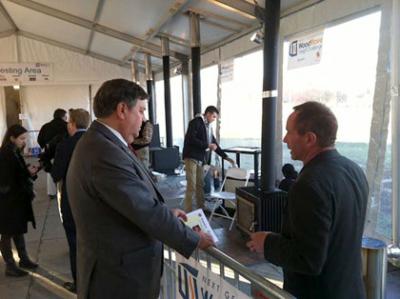
Some thoughts about burning wood stoves.

During my recent trip to Washington DC I was pleasantly surprised by some things. Obviously it is quite an honor to even be invited as one of 12 global teams to come to such an event, and the publicity was awesome. The learning and the networking however was nothing short of amazing. While we were there we got to be interviewed by Popular Mechanics, CBS News, and National Geographic and our stoves photo was featured in the New York Times. The visit to the Austrian Embassy and visiting with the Danes and the Finns was very exciting as well.
What pleased me most was the amount of well supported evidence that wood energy is seen by numerous scientific and governmental communities as something that needs to be supported. The biggest reasons are very simple.
It is accepted by most people in the US Forestry service that the reason we have seen such huge forest fires in the last decade is improper management of the forests. Bans on cutting trees have caused over population of trees and massive buildup of underbrush which creates really hot fires. If the forest floor were cleaned of dead fall then most fires would scoot along the floor and not involve the canopies above. Selective logging would also reduce this problem and leave the forests healthier as trees would not be competing for air, water, and sunlight.
Another factor is that rotting wood is a source of methane gas production which is known to be responsible for thinning out the earth’s protective ozone layer. This can be stopped or reduced by farming the dead fall for use in solid fuel heating appliances. This is where the stove industry can shine with new equipment that burns very cleanly on this otherwise wasted fuel source.
We also discussed some large scale projects in several states where wood scrap is used to heat public schools and run power and steam plants, this is becoming a huge industry. One reason for this is that there are imbalances in the forestry system where certain species were planted several decades ago to support pulp and paper mills which no longer exist. These species of trees have now overpopulated certain areas and need to be thinned out so other species can regain a natural balance. Another factor is that the Western tree Beetle is killing off large numbers of trees, and this is also affecting several eastern seaboard growth, these trees need to be harvested to stop the spread of this threat.
It is in this manner of a holistic approach that several representatives of the following branches of government chatted with myself and the group as a whole. These government branches include the Dept Of Forestry, Department of Agriculture, Department Of Energy, and the Environmental Protection Agency. We were also approached by folks from the Pentagon who saw our unit particularly as a possible tool for disaster relief and of course keeping our enlisted folks warm, dry and well fed while on missions of both foreign aid as well as war time efforts. Of course we would prefer not to support war efforts, but do support our service people and their needs to be comfortable when serving in the field.
I believe what surprised (and taught) me the most is that there really are many great folks in government who do see the importance of looking ahead at troubling times. In fact while we were en route to DC there was an exercise involving all 3 North American Governments, the Military, and FEMA to see what would be the weaknesses in our continental power and service grids. The outcome was not pretty. It is a fact that daily we flirt with disaster, even National Geographic did a program just last month they aired a special called American Blackout. It was a Hollywood look at America without power for just 10 days. The exercise I mentioned above was called grid ex 2. It clearly showed that due to antiquated electrical plants and transmission lines, possible solar flares, EMP devices and other natural disasters or just plain terrorism events that our systems could, and may well go down for months. The scary part was that this is not an “if”, but a “when”.
We were told by many that we must keep our vision of off grid survivability as our primary goal. While we did not win the competition we were seen as a very unique company with a unique vision, that of helping people prepare for rough times ahead.
After returning from that wonderful but grueling trip (the schedule was near torture) Bridget and I left 2 days later for our factory in the Medford Oregon area. We were delighted to see that the improvements on our new Katydid stove meant that it was time to start shipping them out in full force. We are now looking at opening an assembly center here on the island as well as wharehousing and shipping. This will allow us to start shipping complete chimney systems with each stove and make better money through helping others by supplying everything they need. We can also help design their venting system and over see their complete installation process.
Of course we can also do this here at home for those interested, we can be reached at 206 850 2322 for further information.
- Login to post comments
